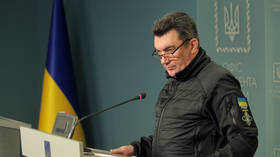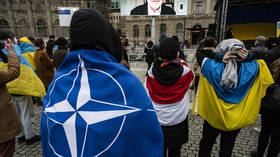Ukraine tells NATO what it can do to help establish ‘no-fly zone’

The head of Ukraine’s National Security and Defense Council, Alexey Danilov, has urged NATO to at least provide his country with weapons, if the military bloc is not willing to establish a no-fly zone over Ukraine directly.
In a Facebook post on Tuesday, the official wrote that “if NATO does not want to or cannot close Ukrainian airspace, we will close it ourselves, give us weapons, if yours are lying under tarp.”
Danilov added that “right now, in this very moment, this day and minute, we are in need of as swift and practical assistance as possible.”
He singled out two main areas where foreign military supplies would be most welcome – warplanes and anti-aircraft weapons.
And while several nations, including the UK and Germany, have already either provided Ukraine with anti-aircraft portable missiles or promised to do so in the near future, not a single country has officially expressed readiness to hand warplanes to Kiev yet.
In fact, since the start of Russia’s military offensive in Ukraine, President Volodymyr Zelensky has been pleading for Western allies to establish a no-fly zone, or at least provide Kiev with fighter jets. However, NATO refused to do so over the danger of getting involved in a direct military confrontation with Russia.
In late February, reports emerged suggesting that some Eastern European countries such as Poland and Romania could ship their Soviet-made military aircraft to Ukraine. Those claims were further spurred on by the EU’s top diplomat Josep Borrell, who suggested that Brussels could fund such deliveries. However, the EU official later had to backtrack on his statement, with the countries supposedly willing to donate fighter jets to Ukraine all publicly rebutting any such plans.
On February 24, Russian troops and warplanes crossed the Ukrainian border in what President Vladimir Putin described as a “special military operation” aimed at “demilitarizing and denazifying” the country. The Russian head of state also claimed that NATO had been planning to drag Ukraine into the military alliance and build bases there. On top of that, according to Putin, the Ukrainian government has been using force to oppress the Russian-speaking population of the Donbass – something Moscow described as “genocide.” Ukraine and its Western allies dismissed all these claims as merely a pretext for waging “unprovoked” aggressive action against a sovereign state.













